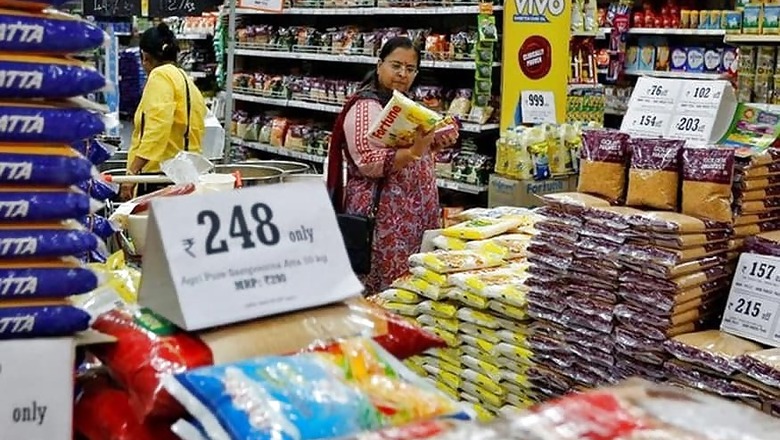
views
New Delhi: The humble onion, which has been selling at record prices across cities in recent weeks, has probably already pushed up inflation to beyond the 4% threshold set by the Reserve Bank of India (RBI). Prices of most other vegetables have also inched up in recent weeks. But expensive vegetables may not hold back the Monetary Policy Committee (MPC) from announcing yet another rate cut on December 5; growth concerns may trump those over rising inflation. India’s economic slowdown is getting prolonged and deep and the question before the MPC may be the quantum of a cut instead of whether to cut any further.
Ideally, the repo rate is a tool in the hands of monetary authorities to control inflation. When inflation rises, central banks usually increase the repo rate as this acts as a disincentive for banks to borrow from the central banks. This ultimately reduces the money supply in the economy and thus helps in arresting inflation. But the MPC is widely believed to go against this conventional wisdom and actually slash rates further on Thursday.
Some economists have warned the MPC against another rate cut, saying inflation needs to be watched closely. And some others have said that the previous rate cuts — there have been five successive cuts totaling to 135 basis points since February this year — have had little impact in terms of arresting India’s growth slowdown so another one would be rather futile.
But since the MPC has maintained an “accommodative” stance throughout, there is all likelihood of another cut. Repo is the rate at which the RBI lends to banks and when it gets lowered, ideally, auto and home loans and other EMI payments should fall for the ‘aam aadmi’. Ideally, lower lending rates should then encourage spending and bring back that elusive growth in the economy.
But the MPC has slashed the repo rate by 135 basis points (1.35%) in this cycle to 5.15% from 6.5% since February and India’s GDP has continued to fall quarter on quarter, as if the economy has become immune to rate cuts. We now know that the economy slowed to a 26-quarter low at 4.5% in the July-September period and the RBI itself has revised its own full-year GDP growth forecast several times this fiscal.
“So far successive rate reductions have not helped the economy as growth has continued to fall. Though there have been some fiscal actions (by the government) as well, there has been little stimulus on the demand side. Unless steps are taken to stimulate demand, rate cuts will remain ineffective,” said DK Srivastava, Chief Policy Advisor at EY.
He also pointed out that another reason (apart from inadequate steps to boost overall consumption) for the seemingly widening gap between rate cuts and economic growth is the lack of transmission of rates. In simple terms, this means that though the RBI has slashed the rate at which it lends to banks, the benefit of lower rates has not reached the common man. Srivastava said lack of rate cut transmission will continue to be a matter of concern. “Transmission has been fractional, at only about 45 basis points (0.45%) against 135 bp rate reduction. This makes monetary policy ineffective.”
Ratings agency CARE Ratings said the MPC should ideally hold rates this time since rising inflation was a concern. Associate economist Sushant Hede said, “CARE Ratings believes that policy rates should remain unchanged given the rising retail inflationary concerns. However, with the MPC giving higher weightage to the persistent economic slowdown, the committee would cut rates by 25 bps in the current policy. CARE Ratings believes that in case the MPC cuts the policy rates by 25 bps in the current policy, it would hold policy rates in the February 2020 policy and track the efficacy of interest rate transmission and its impact on economic growth. If MPC holds policy rates in the December policy, then contingent upon benign inflation and weak growth the policy rates could be lowered by 25 bps in the February MPC meeting.”
Meanwhile, analysts at brokerage Edelweiss said the Indian economy was locked in a negative feedback loop between the financial (exhibiting caution), private (weak profits/incomes) and government (weak revenues) sectors and hence needed sustained policy support. They said the MPC should ignore inflation and instead support growth by going in for a 25 bps cut.
“Inflation has inched higher to over 4% (and may cross 5% soon), but it is mainly due to temporary factors (spike in vegetable or even telecom prices) rather than the onset of an inflationary dynamic; this should not hold back the RBI from supporting growth in our view. We anticipate a 25-50 bps rate cut in the forthcoming policy with continued liquidity support,” the analysts said.
Analysts at another brokerage Emkay echoed these sentiments, advocating an even higher rate cut at 50 basis points. They said, “In our view, Q2 GDP is significantly lower than the RBI’s trajectory, making room for at least another 50 bps cut — as the policy decision is now anchored toward narrowing the output gap. Further, the rise in inflation is largely a factor of transitory vegetable prices, excluding which it stands at 3%.”
(Author is a senior journalist. Views expressed are personal.)


















Comments
0 comment